- This column was published in RAIL 873.
As with the BBC’s Panorama programme in December, Channel 4’s recent Dispatches programme on February 11 - written and presented by Liam Halligan - was puffed for days by the groups opposed to HS2 which (once again) proclaimed that it would be the ‘smoking gun’ that would finally kill off HS2. As usual, the truth was very different.
What did we actually learn from the 30-minute programme? Nothing that we didn’t know already. Like Panorama, it was a rehash of old news and stories spiced up with ‘revelations’ that weren’t, plus various unattributable briefings from anonymous sources where speculation was presented as fact.
In the first part of the programme, Halligan spent a lot of time with weary Northern commuters on short-formed or delayed trains who (understandably) were complaining about the service. The Pacer trains came in for particular criticism - but more of them later…
Early on, Halligan is filmed getting off a train at Liverpool Lime Street. Was there any mention of how the station has just had £340 million spent on it (it has been rebuilt, had platforms added and extended, extensive track alterations, and been resignalled)? Of course not.
Halligan goes on to say that the cost of HS2 “ballooned” from £33 billion in 2011 to £56bn in 2015, but doesn’t give any context. He doesn’t explain that this increase was due to the cost of HS2 being uplifted to reflect inflation, and that the 2015 figure includes the cost of the trains (£7bn) which wasn’t included in the 2011 figure.
The contingency figures were also adjusted. The spending review in 2015 set the long-term funding envelope for HS2 at £55.7bn (including contingency), so the actual cost of building HS2 hasn’t changed. But acknowledging that doesn’t fit the narrative.
Halligan then says that “some experts predict a massive £100bn bill” (note the plural). In fact, only one person (Michael Byng, who came up with the figure) is predicting £100bn.
Halligan then does a piece to camera on the HS2 Curzon Street construction site, where he says: “Given the vast cost, does HS2 even make sense? This is a complex question.” Off he goes for an ‘exclusive’ interview with former Office of Rail and Road Chairman Professor Stephen Glaister, who has been critical of HS2 in the past.
So, is the complex question answered?
Halligan asks: “Is it good value?” Glaister replies: “Nobody knows.” So, that’s cleared that up then!
In a tightly edited video, Glaister then goes on to say: “You really must put it in the context of an overall strategy about what you think the national problem is” - something Halligan fails to do as the very reason for building HS2 is never mentioned. The fact that HS2 is designed to free up capacity on our existing Victorian network because it is full is completely ignored - despite Halligan mentioning record passenger numbers earlier in the programme!
Halligan then claims that HS2 “hasn’t been thought through” and that there “might” be better ways of spending the money. This completely ignores the fact that a huge amount of research into the need for HS2 has been done.
Proposals examined in great detail by both WS Atkins and Network Rail back in 2012-13 comprised a set of incremental capacity and connectivity improvements, achieved by “upgrades to the conventional rail network that could: provide additional capacity and improved connectivity for the set of main centres that would directly benefit from HS2; and also provide benefit to those places from freed-up capacity that would be created by HS2 on the conventional network”.
The upgrades included “measures relating to commuter capacity on lines around the major conurbations on routes potentially affected by HS2 to ensure compatibility with the wider objectives of HS2 of increasing rail capacity for commuters”.
However, it was found that the schemes necessary would require 2,770 weekend closures, endless bus substitutions and increased journey times for more than 14 years, and achieve far fewer overall benefits.
Also, attention to the impact of even further traffic on the West Coast Main Line was referred to by Sir David Higgins in evidence to the House of Commons Transport Select Committee as long ago as 2012, when he described the WCML as “a busy, heavily used railway, and we’re really pounding it… what we really should be doing when we finish the first stage of High Speed 2 is take the old West Coast route out and spend a year fixing it up, and doing it properly. Because by then I reckon it will be really trashed.”
If Halligan was really trying to answer what he himself calls a “complex” question, you would think he would know about this research and mention why we’re actually building HS2 in the first place. But doing that wouldn’t fit the narrative either.
Halligan then returns to Liverpool and talks (again) about Pacers, calling them the “workhorse” of the Northern rail network that are “ex-bus chassis bolted onto train wheels - a joke”.
The joke’s actually on Halligan. Some Pacers do have bus components (the Class 142s used similar body panels used by Leyland National buses), but the trains were from an original design by British Rail and the Class 142s were built on brand new steel rail vehicle underframes at Workington in 1985-87. The sister units, the Class 144s used by Northern, don’t use any bus components - they were built as pure rail vehicles by British Rail in Derby in 1986-87.
Halligan does mention that the Pacers are being phased out, but remarks that it “hasn’t happened yet”, overlooking the fact that it is happening and that by 2020 they will all have gone for scrap. He never mentions that one of their replacements is a £450m fleet of brand new trains which are starting to be delivered to Northern now - because that wouldn’t fit the narrative either.
Nor would talking about the Great North Rail Project, a massive investment scheme that is modernising and electrifying lines across the North. It never even gets a mention. Ironically, the day that Dispatches was aired another (albeit very late) milestone was reached as the first electric trains ran between Manchester and Preston via Bolton.
Halligan could have talked about this, as these electrification schemes are enabling more modern diesel trains to be cascaded to help replace the Pacers that he’s obsessed about. But no doubt that didn’t fit the narrative either!
Next up is a two-and-a-half-minute piece of film (out of a 26-minute programme) showing Halligan and his crew travelling on another busy Pacer, just to show viewers what a packed Pacer is like. At one point, Halligan laments that some people can’t get on the train to get to work “because there’s just no room”. The irony that there would have been more room if he hadn’t taken up space filming this pointless stuff, and spent more time really trying to answer those “complex” questions, hasn’t occurred to him!
Halligan then gives a cursory outline of Northern Powerhouse Rail, and goes to see Mayor of Manchester Andy Burnham. So, are we finally going to see some of those “complex” questions answered? Of course not - it’s a pointless and heavily edited interview.
Firstly, Halligan recounts his earlier journey, only this time emotively saying Pacers were built out of “scrap buses”, and suggests “this wouldn’t be allowed in Surrey”.
Then we come to the crunch. Halligan tries to put Burnham on the spot about HS2 and asks: “If you had to choose between linking up Northern cities or yet another North-South link, what would you choose?”
But this is a choice Burnham never has to make. It’s not in his power and way above his paygrade - and Halligan should know this. HS2 is decided on by MPs sitting in Parliament through the Hybrid Bill process. It’s a national infrastructure project, not a regional transport initiative.
Burnham’s first answer? “We need BOTH.” But then he’s free to say “but”, knowing it doesn’t matter. The whole interview was a waste of time and as Burnham showed on Twitter later, he was less than impressed.
Halligan then reveals an ‘exclusive’ Dispatches poll suggesting that 63% of those in the North who were asked wanted HS2 money spent on Northern Powerhouse Rail instead.
Northerners want money spent in the North isn’t exactly a revelation, is it? I’ll bet if you asked Southerners if they would they rather see NPR money spent on Crossrail 2 you’d get the same answer!
Next, Halligan returns to Newcastle to interview Professor John Tomaney, another person who has been critical of HS2. What revelations are we to be treated to this time?
We get another of Halligan’s pointless pieces to camera in which we’re told that “getting from Middlesbrough to Newcastle, just 30 miles, takes almost an hour and a half. That’s an average speed then, of around 23 miles an hour. Slower than a galloping horse.”
Really? “Almost an hour and a half”? Hmm, let’s see what National Rail Enquiries says (see below). Oh! An hourly service that takes 1hr 7mins with a change at Darlington. As for that “just” 30 miles, by rail it’s actually 51!
Meanwhile, what does Tomaney have to say?
Will HS2 help “tackle the North-South divide” muses Halligan?
Tomaney answers a completely different question: “The idea that HS2 would be the solution to the economic regeneration of the North is, I think, a weak argument. Billions of pounds are being invested in making very short reductions in journey times to London.”
Hang on a minute! Let’s have a look at some sample journey times taken from official HS2 documents (see above).
Knocking an hour off the time between London and Manchester is a 47% decrease!
Now, what about times between Northern cities and the Midlands, as HS2 is just as much about connecting those cities as London?
From Birmingham to Manchester it’s 54%, and from Birmingham to Leeds it’s a staggering 58% decrease.
I’m afraid what we’re seeing here is some good old-fashioned envy of the South and some Northerners’ obsession with London, to the exclusion of all else - including fact.
Next up after Tomaney is an interview with Alistair Darling, former Labour Secretary of State for Transport from May 2002 to May 2006, and Chancellor from June 2007 until May 2010.
Darling repeats some of his long-standing criticisms of HS2, talking about most people commuting and not “doing the long-distance stuff”. This ignores the fact that HS2 frees up capacity on existing lines for more commuter services - especially around Leeds and Manchester, as well as the corridor from Rugby via Milton Keynes to Euston.
Those of us who remember Darling’s tenure in Transport find his ‘concern’ for the lot of Northern commuters hypocritical, because it was under Darling that plans for tram networks in Leeds and Liverpool were cancelled as he refused to guarantee funding.
Oddly, Halligan seems unaware of this. He also seems unaware that the only rail electrification that happened under Darling (either as Transport Secretary or as Chancellor) was a paltry eight miles from Kidsgrove to Crewe! This was a fill-in to create a diversionary route during the horrendously expensive West Coast Route Modernisation, which ended up costing £10bn but should have been a lot more before it was descoped. The fact this line is now full is why we started planning HS2!
In Part 2, we get more facts and figures about cancellations, and more videos of passengers travelling. Halligan then claims that HS2 will be spending £4bn a year for the next ten years.
Finally, we get to Halligan’s ‘bombshell’, as he confides to camera: “But a Senior Cabinet source has told me, with costs spiralling, Ministers have allocated even more than that. £6bn for HS2 for the next decade!”
And the evidence for this is? None. Not a shred. Zip! Halligan expects you to believe that (unnamed) ministers have found an extra £20bn that doesn’t appear on any Government books - anywhere. Not the Department for Transport, nor the Treasury. The National Audit Office is unaware, as is the Public Accounts Committee. Nobody knows about this apart from an anonymous source, Halligan, and now… you!
Halligan then informs us that apparently (due to these cost overruns that no one offers any evidence for) ministers are “reconsidering” HS2 and “considering” stopping HS2 in Birmingham. There’s no evidence offered, other than unnamed ‘sources’.
Cut to Burnham, who addresses the rumours (pointing out that’s all they are) by saying “that would be criminal, that would be a complete waste of money”. He’s right, of course.
Back in Newcastle, Tomany agrees. As does Glaister, who points out that just going from London to Birmingham “makes no sense” and that “you have to do the whole scheme”.
Bored with the North, Halligan goes to Oxford to get consultant Oxera to crunch some numbers, to prove what everyone already knows… only building Phase 1 of HS2 makes no economic sense (cue another few minutes wasted). Halligan also asks if spending the HS2 money would generate a bigger Benefit:Cost Ratio if it was spent in the North. The answer is yes, but yet again this completely ignores why we’re building HS2 in the first place.
Finally, with just five minutes of the programme left after all the fillers and time-wasting, Halligan interviews HS2 Chief Executive Mark Thurston. Of course, Halligan can’t resist introducing both him and details of his salary (£650,000pa).
The actual interview isn’t much better. Halligan talks about all the wild guesses for the ‘actual’ costs of HS2, as he asks a series of ‘what if’ questions. Thurston plays it with a straight (factual) bat: “What I am very clear on, and HS2 is very clear on, is the budget for this scheme is £56bn.”
Halligan tries again by quoting the former HS2 chairman, who has said “nobody knows the finals costs” - which is true, but Halligan twists this to mean costs can only increase, ignoring the fact that the recent contracts for the stations at Euston and Old Oak Common both came in under estimates (but that wouldn’t fit the narrative).
Thurston reiterates: HS2 has to be built for £56bn and a lot of people are involved to make that happen. Another interview that was a waste of time and Halligan didn’t get what he wanted, so we’re back to more spin about “spiralling costs” (with no evidence offered), then another piece to camera where Halligan claims: “A Cabinet source has told me the Government’s actively considering scrapping the whole of HS2.”
Hang on a minute! This same Cabinet ‘source’ also (supposedly) said that they’ve stashed an extra £20bn down the back of the sofa out of the way of the auditors, to make sure HS2 can be built! Make your mind up…
We now move on to yet another poll. Apparently, only 20% of voters want HS2 built. Ignoring the fact that asking anyone in a poll should the Government spend money on anything (bar the sacred NHS) is almost certainly going to get a negative, what’s the point of this? This is a Parliamentary democracy, not the X-Factor. MPs, not polls, decide on HS2.
Now we go back to Darling, who says: “Don’t get me wrong, I want to see money spent on Britain’s rail network.”
These are hollow words. Did I mention that one of the reasons we still have the Pacers that Halligan hates is because when the Northern Rail franchise was let in 2004, it was done on the basis of zero growth and no investment in new trains? Who was Transport Secretary at the time? Darling. Funny that Halligan doesn’t seem to know that, or wouldn’t that fit the narrative either?
Finally, we end up with Glaister and Tomaney delivering their opinions, neither of which are convincing. Tomaney talks of HS2 being “steamrollered” through, ignoring the fact that it was debated for years before Parliament voted to build it.
The last few minutes are wasted, filling them out with a Manchester poet reciting ‘his thoughts’ on (yes, you’ve guessed it) Pacer trains. Only he isn’t on a Pacer, it’s a newly refurbished Class 150, part of Northern’s commitment to have all its existing trains improved!
Now, what hasn’t Halligan told you? An awful lot…

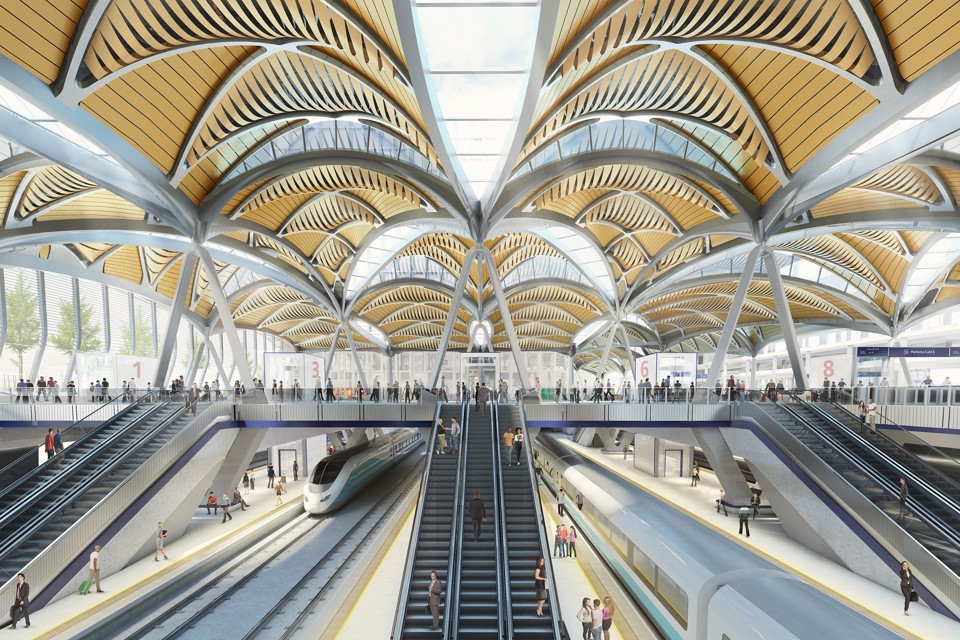

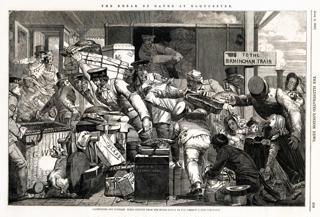
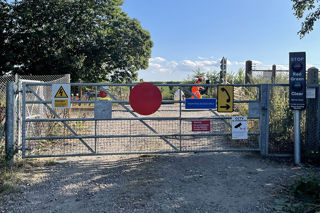
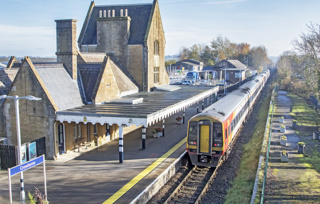
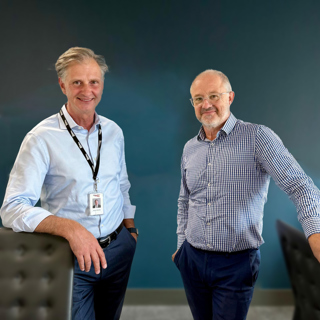











Login to comment
Comments
No comments have been made yet.